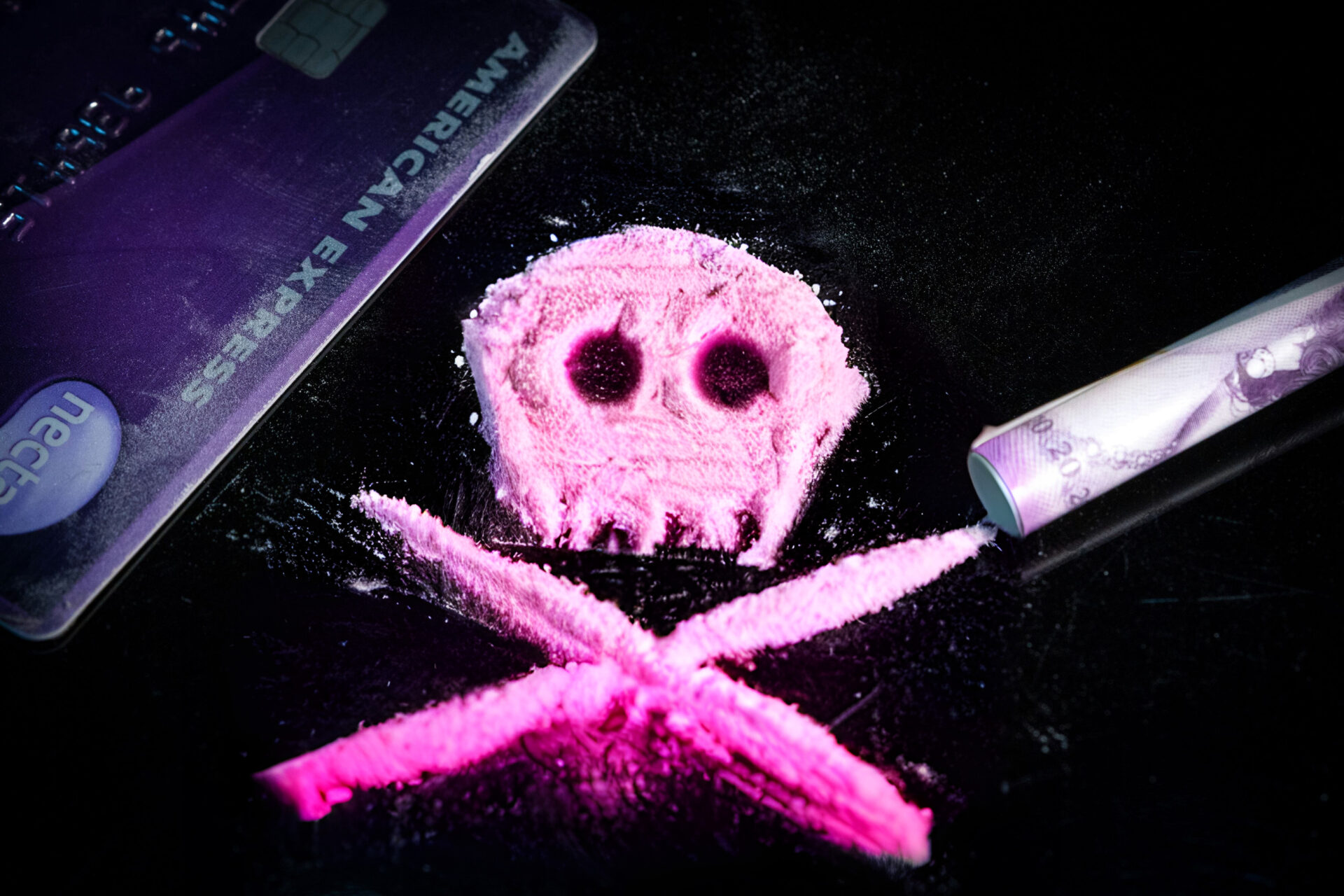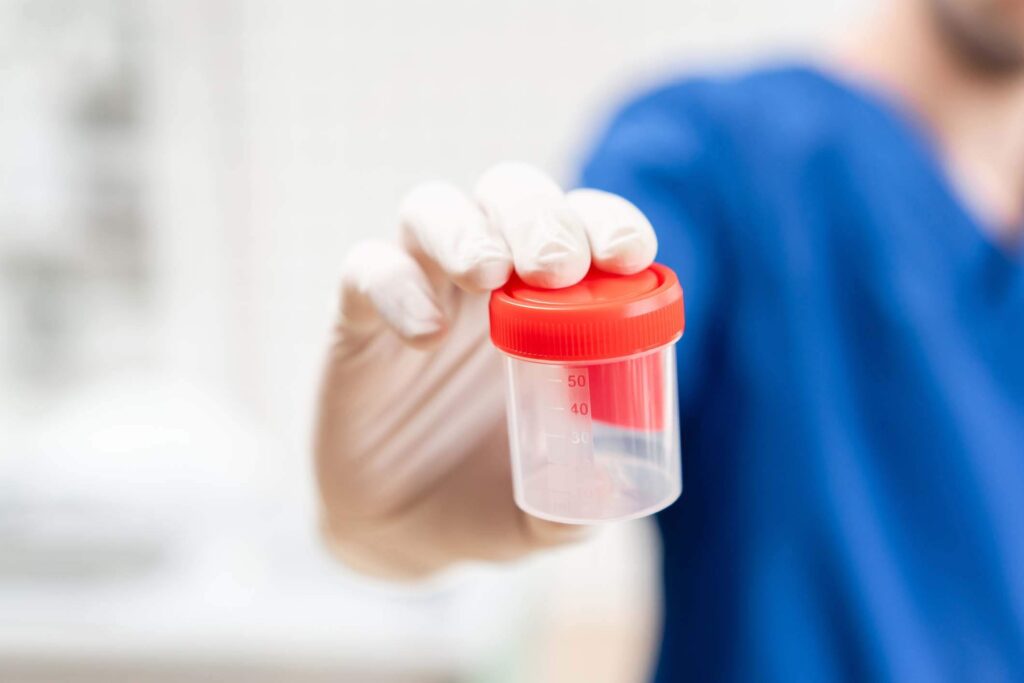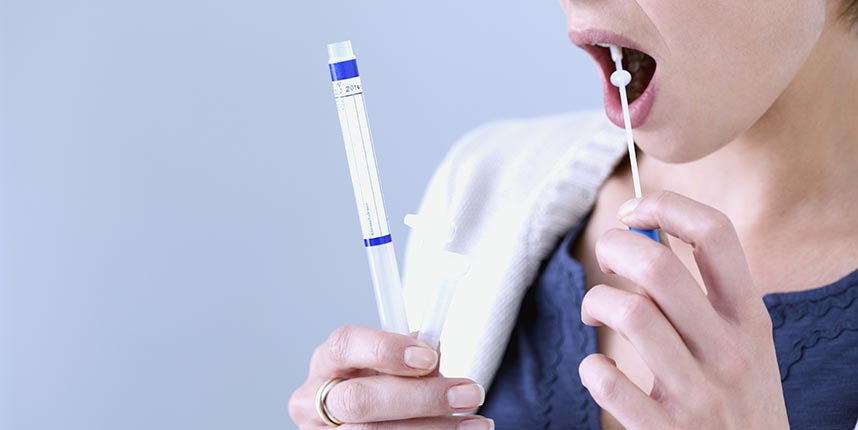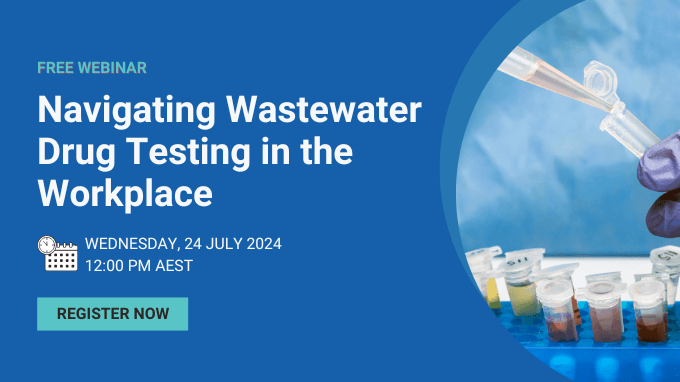Pink Cocaine, or “Tusi,” is a perilous designer drug characterised by its unpredictable mixture of stimulants and sedatives, leading to serious health risks.
Read more
What is Pink Cocaine (Tusi)?
Pink Cocaine – also known as tusi or tusibi – was developed in Colombia in 2018 and promoted as an elite designer drug for the well-heeled. The street name ‘tusi’ refers to 2C-B which was sold in the ‘90’s as the recreational psychedelic ‘Nexus’. It acted as a combined stimulant and hallucinogen and was initially promoted as an alternative to XTC (MDMA). The drug’s popularity was short-lived, once users found it was a much weaker empathy-inducing agent than XTC, was remarkably painful to insufflate, and even at moderate doses was prone to inducing gastrointestinal problems, notably diarrhoea, nausea and flatulence.
Composition of Modern Pink Cocaine
Despite the name, the modern recreation rarely contains 2C-B and is a highly variable mixture of stimulants and sedatives, almost invariably ketamine with XTC, methamphetamine or cocaine and an opioid mixed with a pink food dye that gives it a pleasant strawberry odor. Other fillers are often included, including Benzodiazepines, New Psychoactive Drugs (such as N-BoMe ‘Bath salts’) and hallucinogens like LSD or mescaline.
The Effects and Duration of a Tusi High
Generally, the high peaks within 3 hours but may last up to 8 hours depending on composition. The drug induces excitement and euphoria, often raising sensory awareness. The side effects are likewise variable, invariably involving some level of dissociation from ketamine (which may lead to a frank psychotic break), short-term memory breaks, poor spatial memory, weird delusions and agitation.
Health Risks and Side Effects of Pink Cocaine
The drug mixture raises blood pressure and can lead to serious hypothermia. At higher doses, pink cocaine can induce seizures, and ketamine-associated abdominal cramping and bladder inflammation. Persistent effects include recurrent anxiety and depression as well as long-term recall problems.
Why Pink Cocaine is Especially Dangerous
The appeal of the drug is enhanced by the fact that many mixtures will not be detected with standard on-site screens. The stimulant/sedative combination is already dangerous. The uncertainty about exactly what is being taken makes it deadly.
Safework Health: A Leader In Workplace Drug Testing
If you require drug and alcohol testing solutions for your organisation, please feel free to contact us. Since 2012, Safework Health has delivered quality occupational health services aimed at keeping Australian workplaces safe and healthy.
At Safework Health, we provide comprehensive drug and alcohol testing services .These include urine drug testing, oral fluid (saliva) drug testing, alcohol testing and hair follicle drug testing.

Meet The Author
Dr Phil Tynan, National Toxicologist
Dr Tynan, a distinguished Toxicologist and a retired Clinical Biochemist Pathologist, brings a wealth of industry knowledge and experience. He is considered an expert in testing for substances of abuse.
Dr Tynan primarily supports Safework Health in developing new drug assays and procedures. He also offers guidance to clients and expert clinical advice as needed.
Dr Tynan is a published toxicologist in internationally peer-reviewed journals and is available to provide advice and expert opinion regarding results, expert witness testimony and appearances at courts and tribunal hearings.
It is very important to ensure that your organisation has a drug and alcohol testing policy in place to ensure safety on the road.
Read more
The Risks Associated with the Road Transportation Industry
The road transportation industry plays an integral part in the Australian economy, driving an estimated revenue of $70.3 billion in 2024. Although it is one of the most important industries in Australia, the safety risks involved in maintaining this industry is quite high. One of the main risks associated with the road transportation industry is the misuse of drugs and alcohol. Employers must ensure that their drivers operate to the highest of standards, to ensure the roads are safe for everyone that uses them. To achieve road safety, employers need to consider having a drug and alcohol policy in place and carry out regular drug and alcohol tests on their drivers.
Drug and Alcohol misuse on the road
Drug and alcohol use while driving in Australia is more common than you may think, with concerning statistics showing the extent of the problem. In Australia, 30% of fatal crashes involve drink driving, highlighting the risk posed by drivers who operate under the influence of alcohol. 20% of those that are killed in accidents, had a blood alcohol concentration (BAC) over the legal limit emphasising the growing concern of driving under the influence.
Another growing concern in Australia is driving under the influence of drugs. Between 10-30% of road fatalities are estimated to involve drivers under the influence of drugs. These substances not only impair reaction times and decision-making but also create unpredictable effects, particularly when combined with fatigue or stress. Another concerning statistic related to drug driving is that 25% of drivers killed in road crashes tested positive for drugs other than alcohol, showing that a substantial portion of fatalities is linked to illicit or prescription drugs that can impair driving ability.
The Impact of Substance Abuse in Road Transportation
For the road transportation industry, where drivers spend long hours behind the wheel, often in isolated or high-stress environments, the risks of drug and alcohol impairment are magnified. Drivers may turn to stimulants to stay awake or alcohol to unwind after long hours, but these substances can have dangerous consequences. When impaired drivers get behind the wheel, their ability to control their vehicle, react to hazards, and make sound decisions is compromised, endangering not only their lives but also those of other road users.
The Role of Drug and Alcohol Testing
Implementing robust drug and alcohol testing programs is a critical step for companies in the road transportation industry to protect their workforce and the public. Testing helps to identify impaired drivers before they can cause harm and serves as a deterrent to substance misuse. It also fosters a culture of safety, where drivers are more aware of their responsibilities and the consequences of risky behaviour.
At Safework Health, we provide comprehensive drug and alcohol testing services tailored to the unique needs of the road transportation industry. These include urine drug testing, oral fluid (saliva) drug testing, alcohol testing and hair follicle drug testing.
Our testing services help companies maintain compliance with legal requirements and industry regulations, and our 24/7 support ensures that testing can be conducted at any time, reducing downtime and ensuring minimal disruption to operations. We offer onsite drug and alcohol testing, in clinic drug and alcohol testing, pre-employment/return to work drug testing and post-incident/reasonable suspicion drug testing.
By investing in drug and alcohol testing, companies not only protect their drivers but also contribute to broader public safety, reducing the likelihood of tragedies that result from impaired driving
Safework Health recently carried out Wastewater Surveillance Testing at a mine site in New South Wales.
Read more
What To Do Before Urine Test
Understanding what to do before a urine test (and what not to do) is critical for employees to ensure accurate results. Employers play a key role in advising their workforce on proper preparation to avoid discrepancies or misunderstandings during drug test urine analysis.
1. Avoid Consuming Prohibited Substances
It might sound obvious, but it has to be said. Employees should avoid consuming any prohibited substances before a drug test. Employers should clearly communicate their drug and alcohol policy, including which substances are prohibited. This ensures employees are fully aware of the expectations and consequences of non-compliance. For instance, substances like cannabis, amphetamines, and cocaine are commonly screened during a drug test for a job and must be avoided.

2. Do Not Consume Excessive Fluids
Drinking excessive amounts of water or other fluids to dilute urine can raise red flags during a drug test urine analysis. Diluted samples may require retesting, which can delay results and create complications. Employers should remind employees to maintain normal hydration levels without overcompensating.
3. Avoid Certain Medications and Supplements
Over-the-counter medications and supplements can sometimes trigger false positives in a drug test urine sample. Employees should disclose any medications they are currently taking to the testing administrator. Employers can advise employees to consult their healthcare providers to ensure that any prescribed medication will not interfere with the results.
4. Refrain from Last-Minute Attempts to Alter Results
Attempts to alter drug test results, such as using detox drinks or synthetic urine, are prohibited and can lead to serious consequences, so it’s important for employers to emphasise the importance of honesty and transparency during the testing process. Employees found tampering with test samples may face disciplinary action as outlined in the company’s drug and alcohol policy development in Australia.
5. Avoid Physical Overexertion
Strenuous physical activity can sometimes affect the chemical composition of urine, potentially impacting test results. Employers should encourage employees to avoid heavy exercise on the day of the test to ensure that samples aren’t affected by temporary physiological changes.
6. Refrain from Consuming Poppy Seeds or Certain Foods
Certain foods, such as poppy seeds, can produce false positives for opiates in a drug test urine sample. Employers should provide employees with a list of foods to avoid in the days leading up to the test to prevent unnecessary complications.

How Employers Can Support Employees in Preparing for a Drug Test
Employers should provide clear guidelines on what to do before a urine test to ensure accuracy and compliance. This includes sharing the company’s drug and alcohol policies and explaining the purpose and procedures of drug testing. Encouraging employees to seek clarification if they have questions or concerns promotes a transparent and supportive testing environment.
Providing information about what to avoid before an instant drug and alcohol test can help employees feel prepared and confident. This proactive approach reduces the likelihood of errors or misunderstandings, ensuring a smoother testing process for all parties involved.
Maintaining a Fair and Transparent Drug Testing Process
Employers must ensure that the testing process aligns with established policies and industry regulations. Regular reviews of drug and alcohol policies, combined with clear communication, foster a culture of compliance and safety. By advising employees on proper preparation and ensuring transparency in the testing process, employers can uphold the integrity of workplace drug testing programs.
Safework Health recently carried out Wastewater Surveillance Testing at a mine site in New South Wales.
Read more
Drug Testing Procedures and Protocols
Implementing drug testing procedures and protocols in the workplace is important for maintaining safety, productivity, and compliance. However, balancing these measures with employee privacy and consent can be complex. Clear guidelines, transparent communication, and adherence to legal standards are necessary for creating a fair and respectful workplace drug and alcohol policy.
Understanding Workplace Drug and Alcohol Policies
A well-defined workplace drug and alcohol policy sets the foundation for fair and effective drug testing. Your policy should outline the reasons for testing, the types of tests conducted, and the protocols followed. Employees should always be made aware of these procedures and their rights to ensure transparency and trust.
Employers should also specify situations where testing is required, such as incidents, random checks, or pre-employment drug and alcohol testing. This clarity helps your employees understand expectations and safeguards their privacy.
Consent in Workplace Drug and Alcohol Testing Procedures
Obtaining informed consent is a key aspect of implementing any workplace drug and alcohol testing procedure. Employees need to be aware of the testing methods, the substances being screened, and how the results will be used. Consent should always be documented, and employees should have the option to ask questions or seek clarification before agreeing to a test.
In cases such as occupational health assessment screenings or safety-related roles, employees should receive clear information on how consent is obtained and why the testing is necessary. This approach respects employee autonomy and ensures fairness.

Privacy Considerations in Drug Testing Procedures and Protocols
Privacy is a significant concern when conducting drug testing procedures and protocols. Employers must ensure that testing is carried out in a confidential manner and results should only be accessible to relevant personnel. Private information should always be stored securely.
For example, when conducting urine drug testing in Australia, standards require strict adherence to privacy protocols. This includes ensuring sample collection is discreet and that no unnecessary personnel are present during the process. Protecting privacy throughout the entire procedure is vital for maintaining trust and legal compliance.
Implementing Fair and Transparent Testing Procedures
Fairness is essential when rolling out a workplace drug and alcohol testing procedure. All employees should be subject to the same policies and processes without discrimination or bias. Random testing must be genuinely random, and all results should be processed according to the same standards.
Employers can enhance transparency by clearly communicating the drug testing procedures and protocols, including the types of tests used, such as urine drug testing. Providing employees with detailed information and a chance to ask questions can reduce anxiety and increase acceptance of the policy.
Training and Education on Drug Testing Policies
To ensure the successful implementation of a workplace drug and alcohol policy, employers should invest in training and education. Supervisors and managers need to understand the procedures, consent requirements, and privacy obligations and employees should also be informed about their rights, how testing works, and the reasons behind the policy.
Regular training sessions can clarify misconceptions, address concerns, and promote a culture of safety and respect. This education also ensures that everyone involved is aware of their responsibilities and the importance of maintaining privacy and consent.

Maintaining Compliance with Legal Standards
Staying updated on guidelines provided by organisations such as WorkSafe Victoria can ensure compliance with Australian laws and regulations when implementing workplace drug and alcohol testing procedures. Ensuring that policies and practices align with these standards protects the business and employees.
Employers must also be prepared to handle challenges related to consent and privacy. Clear documentation, consistent application of the policy, and ongoing reviews of procedures help maintain compliance and fairness.
Balancing Safety and Privacy in the Workplace
A successful workplace drug and alcohol policy balances safety, privacy, and consent. By implementing clear procedures, obtaining informed consent, and protecting employee privacy, employers can create a safer and more respectful workplace. Transparent communication, fair application, and adherence to legal standards are key to managing these policies effectively.
For more information on occupational health assessment or pre-employment drug and alcohol testing, ensure your workplace policies are up-to-date and aligned with current Australian standards.
Safework Health recently carried out Wastewater Surveillance Testing at a mine site in New South Wales.
Read more
Oral Fluid Drug Test
Maintaining a safe and productive work environment is important for any business. Drug testing helps identify potential risks and ensures compliance with workplace safety regulations. Employers often use either an oral fluid drug test or a urine test to screen employees for substance use. Choosing the right method depends on your business needs, testing frequency, and the accuracy required.
What Is an Oral Fluid Drug Test?
An oral fluid drug test, also known as a saliva drug test, detects the presence of drugs in an employee’s saliva. This test is non-invasive and easy to administer on-site, making it convenient for quick testing situations. Saliva tests typically detect recent drug use within a window of 24 to 48 hours, making them ideal for random and post-incident screenings.
What Is a Urine Drug Test?
A urine drug test is one of the most common methods for workplace drug testing. This test analyses a urine sample to detect drugs and their metabolites. A urine test can identify drug use over a longer period, typically up to several days or weeks, depending on the substance. Employers often use an instant urine drug test for pre-employment and routine workplace testing.
Advantages of Saliva Drug Tests
Saliva drug tests offer several benefits for businesses:
- Quick Results: Saliva tests provide results within minutes, making them useful for immediate decision-making.
- Non-Invasive Collection: The collection process is simple and does not require privacy or special facilities.
- Detects Recent Use: An oral drug test is effective for identifying recent drug use, which is important for post-incident testing.
Saliva tests are best suited for workplaces requiring immediate and on-site testing, such as in transport and logistics organisations.

Advantages of Urine Drug Tests
Urine drug tests remain popular for workplace drug screening due to their reliability and broad detection window:
- Longer Detection Period: A urine test can identify drug use that occurred days or even weeks before the test.
- Cost-Effective: Urine testing is often more affordable for large-scale or regular testing programs.
- Established Standards: Urine testing follows widely accepted standards, making it suitable for compliance with workplace policies and regulations.
Businesses implementing pre-employment drug testing in Australia often rely on urine tests for their accuracy and affordability.
Which Test Is More Accurate?
Both saliva drug tests and urine drug tests are accurate when used correctly. However, each method has its limitations.
Saliva Drug Tests are more accurate for detecting recent drug use but may miss substances consumed more than 48 hours prior. On the other hand, Urine Drug Tests offer a broader detection window but may be less effective in identifying immediate impairment.
For accurate and comprehensive workplace testing, many employers use a combination of both methods based on their specific needs.
When to Use Saliva Testing vs. Urine Testing
Different scenarios may call for different types of drug testing:
- Saliva Testing: Ideal for random testing, post-incident situations, and on-the-spot screening due to its immediate results.
- Urine Testing: Suitable for pre-employment screening, routine workplace testing, and when a longer detection window is needed.
Understanding these options helps employers choose the right method for their workplace safety programs.

Supporting Drug Testing with Training and Policies
Effective drug testing programs should be backed by comprehensive workplace policies and employee education. Providing drug and alcohol training ensures that employees understand the testing process, the company’s substance use policies, and the importance of a safe workplace.
Additionally, clear policies outlining testing procedures, such as using an instant urine drug test or oral fluid drug test, help maintain transparency and fairness. These policies should be reviewed regularly to align with industry standards and legal requirements.
Implementing Effective Workplace Drug Testing
Combining saliva and urine testing can offer a balanced approach to workplace safety. For instance, using an oral drug test for immediate situations and a urine test for routine checks ensures comprehensive coverage. Businesses can also benefit from pre-employment drug testing to identify potential risks before hiring new employees.
By selecting the right drug testing methods and supporting them with clear policies and training, employers can create a safer, more productive work environment.

Rising Methamphetamine Use in Australia
Methamphetamine is a highly addictive stimulant that produces intense euphoric highs, which are followed by a let-down phase, a “crash” marked by depression, irritability, insomnia, nervousness, and paranoid aggressive behaviours. The International SCORE (Sewage analysis CORe group Europe) collaboration1 recently ranked Australia as second in terms of per capita methamphetamine use of the 30 member nations.
Health Risks and Long-Term Effects of Methamphetamine Residues on Surfaces
Methamphetamine will leave persistent residues on surfaces (benchtops, upholstery, walls, ceiling, flooring, tiles, air-conditioning, ventilation ducts) after manufacture (“cooking”) and smoking. The level of risk depends on the amount of contamination and the susceptibility of the exposed, but they are significant. Short-term exposure effects include recurrent headaches, nausea, dizziness, and respiratory problems. Even minimal exposure can be detrimental, especially for children, pregnant women, and individuals with pre-existing health conditions. Long-term exposure can lead to chronic respiratory problems (bronchitis, recurrent respiratory infections, induced asthma), psychiatric/behavioural problems, neurocognitive injury (memory, cognitive impairment), and an increased risk of cancer (hepatocellular carcinoma and lung cancer).
Exposure Risks and Persistent Health Hazards of Methamphetamine Residues in Contaminated Environments
Exposure can be by skin absorption, eating foods in contact with the residues or (for older children and adults) by breathing in the residues. Children are at greatest risk (given their higher metabolic rate, low body mass and developing CNS) – the EPIC National Clandestine Laboratory Seizure Report 20032 reported ~55% of children tested from sites of former meth home labs test positive for significant levels of meth and other toxic chemicals involved in its manufacture (Messina et al 2015)3. Wright et al (2017)4 reporting on the health effects on children living in former (i.e., supposedly now clean) meth smoke houses and labs emphasised the persisting health risks of methamphetamine environmental contamination (even to adults) which underlines the need for extensive methamphetamine residue testing and thorough cleaning of such sites when identified.
Legal implications
Meth residue contamination has significant legal implications: property owners and landlords can face liability for any injuries or harm resulting from exposure to meth residue on their premises, including physical harm to occupants and financial losses incurred due to the contamination.
Addressing Health Risks of Methamphetamine Residues: The Importance of Testing and Decontamination
With the increasing meth use nation-wide (the latest National Wastewater Drug Monitoring Program report5 shows record high Capital/urban meth use) meth residues pose a serious health challenge – and the first step to address it is meth residue testing followed – if the site is contaminated – by a thorough decontamination.
References
- score-network.eu
- The National Clandestine Laboratory Seizure Report!(EPIC Form 14 OK3) www. We get thereeginfo.gov>DownloadDocument
- Messina N, Marinelli-Casey P, West K, Rawson R. Children exposed to methamphetamine use and manufacture Child Abue Negl. Nov 2014; 38(11): 1872-1883
- Wright W, Keneally ME, Edwards JW, Stewart Walker G. associated with Living in a former Methamphetamine Laboratory – Victoria, Australia 2015 Morbidity and Mortality Weely 6 Jan 2017; 65(52): 1470 – 1473
- www.acic.gov.au/publications
Join this webinar to learn about wastewater drug testing and its implications for workplace safety. Register now!
Read more
Join us on 24 July 2024 at 12 PM AEST for an informative webinar on wastewater drug testing and its implications for workplace safety and drug monitoring.
Can’t join live? Register to secure your spot, and we’ll send you the recording.
Webinar highlights
In this webinar, we will explore:
- Basics of Wastewater Drug Testing: Fundamentals of this innovative testing method.
- National Wastewater Drug Monitoring Program: Findings, trends & workplace relevance.
- Advantages and Limitations: Why wastewater testing is valuable yet cannot replace conventional drug tests.
- Case Studies: Real-world examples demonstrating the effectiveness of drug use reduction policies.
- Practical Tips: Guidance on integrating wastewater testing into your workplace program.
- Future Trends: Upcoming advancements in wastewater drug testing technology.
Don’t miss this opportunity to enhance your knowledge and improve workplace safety. Save your seat now!

Meet Our Webinar Speakers
Dr Phil Tynan, National Toxicologist
Dr Tynan, a renowned Toxicologist, and retired Clinical Biochemist Pathologist, offers a wealth of industry experience. He specialises in substance abuse testing, supports Safework Health in developing new assays and procedures, and provides expert advice to clients.

Nathan Brown, National Chief Scientist
Nathan, with over 20 years of expertise in toxicology, is the National Chief Scientist responsible for drug and alcohol tests in our NATA-accredited laboratories. Recognised as a leading authority in toxicology, he provides expert testimony to support medico-legal analytical results.
Explore our new training and education schedule. Enrol today!
Read moreWe’re excited to announce the launch of Safework Health’s new training and education schedule for comprehensive drug and alcohol programs.
This schedule offers a variety of customisable courses designed to meet the specific needs of your business.
Whether you prefer the flexibility of live online sessions or a focused in-person learning experience at your workplace, we have a training option to suit you.
View the course schedule below or download the PDF version.
| Course Name | Duration | Start Time | Cost | Enrol |
|---|---|---|---|---|
| Accredited Training Courses | ||||
| HLTPAT005 – Collect specimens for drugs of abuse testing | 5 hours |
9:00* AM (time can be negotiated based on location) Evening and after-hours availability upon request. |
From $650 + GST per person | BOOK NOW |
| Combined HLTPAT005 – Collect specimens for drugs of abuse testing and ONRSR Authorised Person | One day | 10:00 AM (time can be negotiated based on location)
Evening and after-hours availability upon request. |
From $800 + GST per person | BOOK NOW |
| Workforce Education | ||||
| Drugs and Alcohol – General Awareness | 60-90 minutes | 10:00 AM (time can be negotiated based on location)
Evening and after-hours availability upon request. |
From $600 + GST per session From $1500 + GST per day |
BOOK NOW |
| Manager / Supervisor Training | ||||
| Reasonable Suspicion / For Cause | 2 hours | 10:00 AM (time can be negotiated based on location)
Evening and after-hours availability upon request. |
From $1250 + GST per session | BOOK NOW |
| Alcohol Breathalyser Training | 90 minutes | 10:00 AM (time can be negotiated based on location)
Evening and after-hours availability upon request. |
From $600 + GST per session | BOOK NOW |
| Drug Test Device Training | 60-90 minutes | 10:00 AM (time can be negotiated based on location)
Evening and after-hours availability upon request. |
From $600 + GST per session | BOOK NOW |
| ONRSR Authorised Person | 3 hours | 10:00 AM (time can be negotiated based on location)
Evening and after-hours availability upon request. |
From $250 + GST per person | BOOK NOW |
Course days, times, and prices are subject to change. Please contact us for the most up-to-date course information.
Our terms and conditions can be found here.
*Time can be negotiated based on location. Start times are Eastern Standard Time (AEST).
Meth residue testing is crucial before buying or renting a property to protect your health and investment.
Read more
Methamphetamine, also called ice or crystal meth, is a dangerous drug. It harms the people using it and can cause problems for property owners and tenants.
The production and smoking of meth can leave behind toxic residues that may not be visible to the naked eye but can cause health problems for future occupants. This is why meth residue testing is a critical service for anyone involved in real estate, whether buying, selling, or renting properties.
Let’s dive into why meth testing is essential and what it involves.
Understanding Meth Residue
Methamphetamine production and use release harmful chemicals into the environment. These substances can cling to walls, carpets, and even air ducts, creating an invisible threat. Long-term exposure to meth residue can lead to respiratory issues, headaches, and other health concerns, especially in children and pets.
Why Test for Meth Residue?
Protecting Health
The primary reason to test for meth residue is to ensure the health and safety of the inhabitants. By identifying contamination early, property owners can take the necessary steps to decontaminate and prevent exposure to these toxic chemicals.
Real Estate Transactions
When buying a property, you want to ensure that your investment is safe and free from hidden dangers. Meth testing as part of the home inspection process can give buyers peace of mind or serve as a bargaining chip if issues are discovered.
Landlord and Tenant Law
Landlords have a responsibility to provide a safe living environment for their tenants. Testing for meth residue is a proactive measure that can prevent legal issues down the line if tenants become ill due to undisclosed contamination.
How Meth Testing is Conducted
Meth testing involves taking samples from various surfaces within the property. These samples are then analysed in a laboratory to determine the level of contamination. Professional testing is recommended to get accurate results and ensure that the sampling process does not further spread contamination.
What to Do if Meth Residue is Detected
If a test comes back positive for meth residue, it’s crucial to undertake a thorough decontamination process. This should be done by professionals who specialise in hazardous material cleanup to ensure that the property is safe for future use.
Protect Your Health and Investment with Safework Health’s Meth Testing Service
Safework Health provides thorough methamphetamine testing services to safeguard against methamphetamine contamination. Using advanced, lab-based methods, we accurately detect methamphetamine and other amphetamines. As one of the few laboratories in Western Australia offering results within 48 hours, we ensure quick and efficient testing, enabling prompt corrective action.
If you suspect that your property or workplace may have been exposed to methamphetamine use or production, don’t hesitate to contact Safework Health today.




